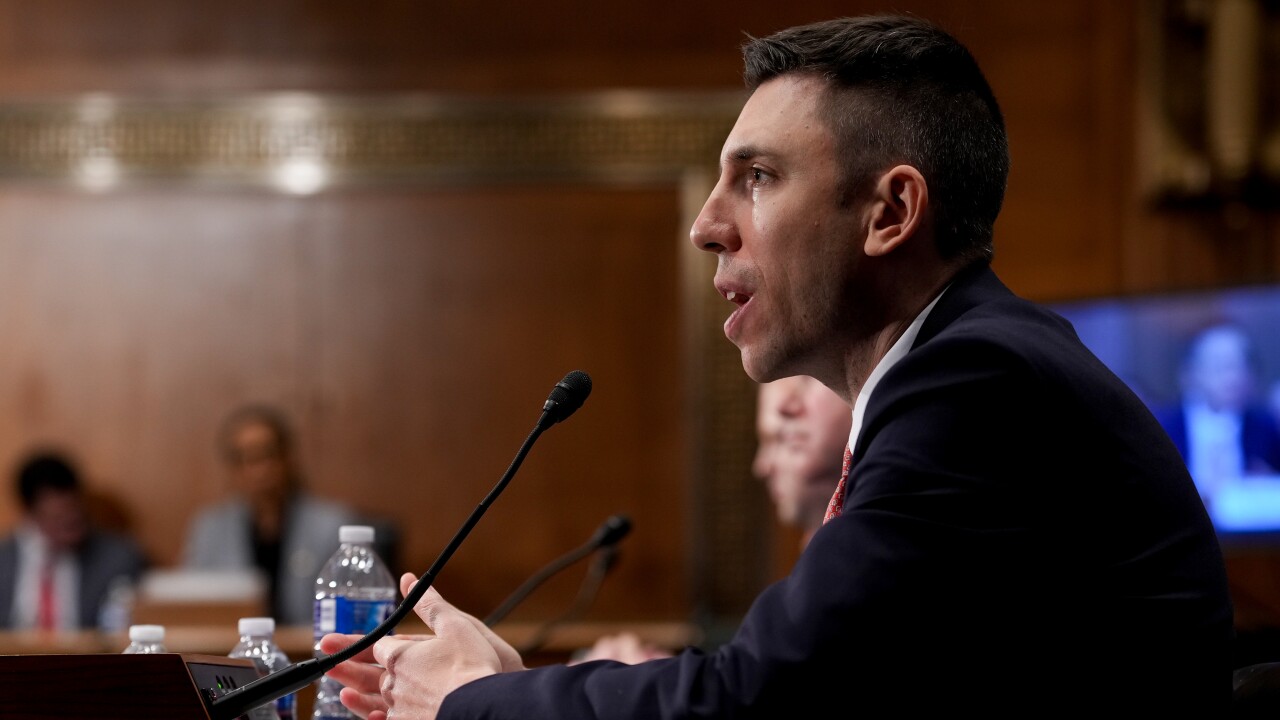- Key insight: The new BNY fund is not a tokenized product; it's a traditional money market fund designed specifically to hold the cash and Treasury reserves that back stablecoins.
- What's at stake: Analysts warn that widespread stablecoin adoption could trigger as much as $6.6 trillion in deposit outflows from the traditional banking sector.
- Supporting data: The stablecoin market is projected to exceed $2 trillion by 2028, potentially driving $1.2 trillion in demand for U.S. Treasuries by 2030.
Overview bullets generated by AI with editorial review
The Bank of New York Mellon announced Thursday that it launched a new money market fund designed to support the burgeoning digital asset industry and capitalize on the extended leash U.S. lawmakers have given banks to integrate stablecoins into the financial system.
The fund, named the BNY Dreyfus Stablecoin Reserves Fund, is tailored for U.S. stablecoin issuers and other qualified institutional investors.
For bankers and credit union executives, the new fund is significant because it directly interacts with the legal and regulatory structures governing U.S. dollar stability.
Stablecoins are digital tokens designed to maintain a stable value, typically pegged 1:1 to a traditional asset like the U.S. dollar. They are essentially digital representations of money that operate on blockchain technology, blending the stability of fiat currencies with the efficiency and programmability of blockchain.
Stablecoins enable cross-border payments "almost instantaneously and at minimal costs," according to a September analysis by Morgan Stanley.
The BNY Dreyfus Stablecoin Reserves Fund is designed to address reserve requirements established under the Guiding and Establishing National Innovation for U.S. Stablecoins, or GENIUS, Act, which President Donald Trump signed into law in July.
Under the GENIUS Act, permitted stablecoin issuers, which include subsidiaries of insured depository institutions and credit unions, must maintain reserves on a one-to-one basis, consisting only of specified, highly liquid assets such as U.S. dollars and short-term Treasuries.
The BNY Dreyfus Stablecoin Reserves Fund is a government money market fund intended to hold those eligible stablecoin reserves. Crucially, the fund does not invest in stablecoins itself.
"Cash is the cornerstone of the digital asset ecosystem, enabling global capital markets to move toward an always-on, 24/7 environment," said Stephanie Pierce, deputy head of BNY Investments. "Stablecoins are at the forefront of this profound transformation."
The fund secured an initial investment from Anchorage Digital, a federally chartered bank focused on financing institutional blockchain projects.
Nathan McCauley, co-founder and CEO of Anchorage Digital, said in the Thursday announcement that BNY's initiative, coupled with the GENIUS Act framework, "mark a new chapter for stablecoin infrastructure in the U.S."
The threat and opportunity: Financial stability and deposit flight
The move by BNY highlights the need for traditional finance to rapidly adapt to digital infrastructure.
Industry analysts have cautioned that the rise of digital cash equivalents could dramatically alter the banking landscape.
Furthermore, although backed by liquid assets, stablecoins are vulnerable to runs, a dynamic similar to traditional money market funds.
Teresa Ho, head of U.S. short-duration strategy at JPMorgan, reinforced this concern in
Despite the risks, the market growth projections are compelling.
The growth of dollar-backed stablecoins is also expected to have a huge impact on government debt markets. Morgan Stanley also cited projections that by 2030, stablecoin issuers could hold as much as $1.2 trillion in U.S. Treasuries, potentially surpassing all major foreign sovereign holders.
Tokenized money market funds versus stablecoin reserves
The launch of the BNY Dreyfus Stablecoin Reserves Fund builds upon BNY's prior work in digital liquidity, and it is distinct from an earlier, joint announcement with Goldman Sachs.
In July, BNY and Goldman Sachs
The aim of that earlier partnership was to "unlock their utility as a form of collateral and open up more seamless transferability in the future," according to Mathew McDermott, global head of digital assets at Goldman Sachs.
This process is known as tokenization, which involves creating a digital representation of an existing asset on a blockchain to enable benefits like 24/7 access and near-instant settlement.
Tokenized MMFs are designed to digitally represent units of existing funds on a permissioned blockchain, primarily enabling them to be posted as collateral without needing to redeem the shares for cash.
The current BNY Dreyfus Stablecoin Reserves Fund launch is different: It is not tokenizing MMF shares. Instead, it is a traditional, regulated money market fund explicitly structured to hold the liquid, non-tokenized financial assets (e.g., cash, short-term Treasuries) that back newly issued U.S. stablecoins.
The Dreyfus fund supports the stablecoin ecosystem by providing what BNY says is a compliant, regulated vehicle for the reserves, rather than creating a digital wrapper around its own MMF shares.
As financial markets move toward a digital, real-time architecture, BNY sees itself as a connector.
"Our collaboration with Goldman Sachs Digital Assets highlights our role as a trusted bridge between traditional finance and emerging technologies," said Laide Majiyagbe, global head of liquidity, financing and collateral at BNY, regarding the earlier tokenization project.
Similarly, BNY views the launch of the Dreyfus fund as enabling clients to transact and use digital cash and cash equivalents, spanning custody, cash settlement and investment management to collateral.






